#country music: a film by ken burns
Text
Yakuza, Oxbow, & Sybris Live Show Review: 2/25, Thalia Hall, Chicago

Yakuza's Jerome Marshall & Bruce Lamont
BY JORDAN MAINZER
For two Chicago bands, Sunday night was all about reflection. First and foremost, local metal legends Yakuza were there to celebrate 25 years of existence. They first caught the eyes and ears of listeners with their independently released debut album Amount to Nothing before signing to a label for 2002's Way of the Dead, an album that truly introduced them as a hard rock band with elements of avant-garde and jazz. On Yakuza records, folks like Ken Vandermark and Fred Lonberg-Holm would rub elbows with members of Mastodon; founding member Bruce Lamont, the lead singer and saxophonist/clarinetist, was the tying thread between the musical worlds. Yakuza steadily released records for the next 10 years before taking a decade-long break, while Lamont would stay active, playing saxophone, participating in bands like Bloodiest and Corrections House, and tending bar at Empty Bottle. Finally, last year, Yakuza picked up where they left off with Sutra (Svart), a record that again dipped its toes into seemingly disparate genres--thrash, prog, free jazz--and managed to churn out a cohesive stew.

From left to right: Marshall, James Staffel, Lamont, Matt McClelland
Sunday night, the Sutra songs sounded among the best, standing tall with Yakuza's back catalog. Set opener "Capricorn Rising" gradually built into a chug, Lamont alternating between sax flourishes and a chanted vocal. Matt McClelland's brawny guitar carried "Burn Before Reading". In general, the rhythm section--bassist Jerome Marshall and drummer James Staffel--provided steadily swirling noise to contrast the unpredictability of McClelland's riffs and Lamont's incantations. Perhaps the most moving moment of the night was when Lamont, visibly choked up, dedicated a song to the late Mars Williams, a fellow Chicago area journeyman saxophonist who passed away late last year.
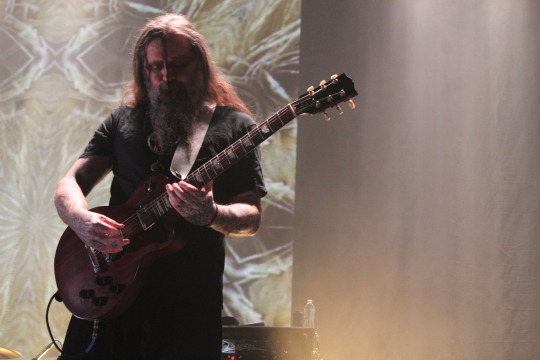
McClelland

Lamont, Staffel, & McClelland

Lamont, Staffel, & McClelland

Sybris' Shaun Podgurski and Angela Mullenhour
Speaking of decades of inactivity, how about Sybris? The local stalwarts, who have released only two records, 2005's self-titled LP and 2008's Into the Trees, played their first Chicago show in 10 years last summer and are now gearing up to release their long-shelved third album Gold on Hold (Absolutely Kosher), recorded in 2011. It's very easy to play "what if?" with the four-piece, as their unique mix of epic, feelings-heavy indie rock and nervy rhythms could have seen them further soar among beloved sounds and bands of the 2010s: the early 2010s emo revival, the late 2010s post-punk revival, Screaming Females, and Hop Along, to name a few. On Sunday, they primed the passionate crowd with clear old favorites, like the jagged "Hurt Hawk", country-tinged burner "Burnout Babies", slow love song "Blame It On The Baseball", and the thunderous "Something About A Darkhorse Or Whatever". As if to whet our appetites for what's to come, they ended their set with two Gold on Hold tracks: the unreleased "Dance" and driving album opener "Watermelon". For music fans all over the globe, Gold on Hold should be one of the more anticipated upcoming releases of the remaining year.

From left to right: Podgurski, Mullenhour, Clayton DeMuth, Phil Naumann

Naumann

Podgurski, Mullenhour, Naumann

From left to right: Oxbow's Dan Adams, Eugene Robinson, Greg Davis, & Niko Wenner
In between the two Windy City phoenixes? None other than San Francisco experimentalists Oxbow, who used the most of their 40-minute set, not limiting the sensory experiences and media to just music. Indeed, for five-plus minutes, they played a short film, whose images, sound-tracked by a droning instrumental, repeatedly cut to black, as if they were pulsating. All this time, they were burning incense. When guitarist/keyboardist Niko Wenner, bassist Dan Adams, and drummer Greg Davis finally entered the stage, they launched into the pseudo funk of Thin Black Duke highlight "A Gentleman's Gentleman". Eventually, vocalist Eugene Robinson sauntered on and did what he does: screech and wail devastating lyrics, his voice raw as hell, and expressively dance and convulse. Similar to Yakuza, Oxbow's most recent songs, from last year's Love's Holiday (Ipecac), sounded the most fresh and urgent: "The Night the Room Started Burning", "Icy White & Crystalline", and "Lovely Murk". The album version of the last one features Kristin Hayter, who Robinson made sure to mention was not there but is playing Thalia Hall in a couple months. Nonetheless, Wenner admirably filled in, emulating her soulful vocal turn. And the band took time to remember another experimental genius and collaborator who passed last year, Peter Brötzmann, but made sure to take advantage of Lamont's saxophone prowess, having him fill in on tempo-changing freak-out "Cat and Mouse". (Though "Cat and Mouse" was released on their sophomore album King of the Jews, their live version with Brötzmann has become well known.) While the three bands who played on Sunday might have constituted an odd group on paper, all share one of the preeminent qualities of good performers: unbridled passion.

Robinson

Robinson & Wenner
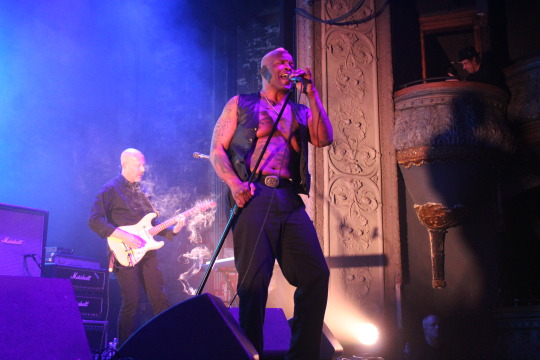
Wenner & Robinson
#yakuza#oxbow#sybris#live music#thalia hall#jerome marshall#bruce lamont#svart#clayton demuth#shawn podgurski#phil naumann#niko wenner#sutra#amount to nothing#way of the dead#ken vandermark#fred lonberg-holm#mastodon#bloodiest#corrections house#empty bottle#james staffel#matt mcclelland#mars williams#into the trees#gold on hold#absolutely kosher#angela mullenhour#screaming females#hop along
0 notes
Text
American Hysteria: The Podcast About Pointless Panic
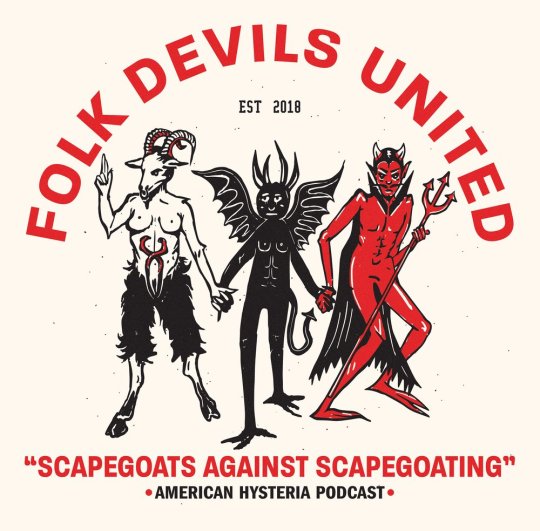
There's a country song by Garrett Hedlund called, "Timing Is Everything."
That sentiment applies perfectly to the podcast American Hysteria. When American Hysteria began in 2018, the flames of society-wide conspiracy theories burned hotter than ever. With then President Trump using the bully pulpit to foster conspiracy theories -- QAnon, white replacement theory, PizzaGate, vaccine denialism, Putin is being persecuted, and even wind power causes cancer -- rational thought began to exit the public consciousness replaced by a belief best described as Fox Mulder of The X Files meets "Springtime for Hitler."
It was a perfect blend of societal delusions and a podcast investigating that same rift in political, social and cultural stability.
American Hysteria explores how fantastical thinking has shaped our culture – moral panics, urban legends, hoaxes, crazes, fringe beliefs, and national misunderstandings. Poet-turned-podcaster Chelsey Weber-Smith tells the strangest stories from American history and examines the forces that create the reality we share, and sometimes,
the reality, we don't.
The podcast is produced by Skylark Media, which is an entertainment network creating and producing interactive audio dramas and podcasts.
The host, Chelsey Weber-Smith, is known for Channel Zed (2020), Behind the Bastards (2018) and You're Wrong About (2018).
Chelsey Weber-Smith also writes country music and rambles around the United States, building campfires and hoping for the best. She is a graduate of the University of Virginia's MFA program in poetry and has written and self-published two chapbooks, a travel memoir, and two full-length folk/country albums, and was recently nominated for a Pushcart Prize. Her work has been published in BOAAT, Transom, Matter, Wu-Wei Fashion Mag, the James Franco Review, and Miracle Monocle. She currently lives in Seattle.
Weber is perfect for the role in the podcast. Listen to her: "I believe in getting tangled in the weeds, in living in the often-untouched gray areas, of exploring the nuances that often get lost. I hope to use humor and poetics to ease people into difficult truths, to educate with care and understanding, especially around issues of race, class, gender, and sexuality, and the bigness and smallness of being alive."
What kinds of topics does American Hysteria cover ? Here's just a partial list.
Early Drag Queens, including the manly soldiers of the U.S. Army who put on drag shows during the Second World War.
The ghosts of children killed in a school bus, who are said to push cars uphill and away from danger.
The toy riots that took place over sought-after toys, such as Tickle Me Elmo, Cabbage Patch Kids, and Beanie Babies.
The wild stories about Halloween sadism -- razor blades in apples, rat poison in chocolate -- which turned out to be largely tall tales.
My favorite episodes so far include the show about the numerous conspiracy theories surrounding Barbie over the decades. These theories range from grooming to fat shaming, anti-feminism to body dysmorphia.
In the episode, I discovered there's one thing Ken and Barbie can never do. Get your mind out of the gutter. It's not that. After all, they're dolls. According to Barbie creator Ruth Handler, they can never get married.
My other favorite is about Hallmark Christmas movies. In the episode, Weber-Smith says, "Because so many Hallmark writers and directors also make horror movies, I called in podcasters Sarah Marshall and Alex Steed of 'You're Wrong About' and 'You Are Good' to discuss the similarities between these two seemingly polar opposite genres."
I learned that each Hallmark Christmas movie budgets at least $50,000 for fake snow. The movies are generally filmed in the summer.
My other favorite is the episode about the craze in the late 80s and 90s about satanic cults. The episode details the insanity of parents claiming their children had been affected by these satanic cults that were overrunning America. Later on, we discovered that Satan is really Steve Bannon, so no worries.
Weber-Smith is charming, funny, snarky, sarcastic and utterly entertaining on this podcast. America Hysteria is hysterical in how it crafts a narrative about these events of mass hysteria and then comments on the state of our culture, society and mindset. The narrative is fascinating and educational because, in a way, this podcast is a textbook (only funnier and wittier) on American sociology.
Chelsey Weber-Smith makes the case that America's craziness is not a recent phenomenon. Conspiracy theories have been with us since dogs were domesticated. Think about it. It's only been 60 years since parents claimed that Elvis and his gyrating hips and The Beatles and their long hair would be the end of Western Civilization as we know it.
Thanks to Fox News, American hysteria will never run dry on conspiracy theories. The network invents them every day -- Tyler Swift is a CIA agent, happy holidays is a secret Communist call sign, and when conservative white people fall asleep, their bodies are being taken over by minorities, like in the film The Invasion Of the Body Snatchers.
Check out American Hysteria. You'll learn something, have fun, laugh often, question the validity of conspiracy theories, and enjoy the warped sensibilities of host Chelsey Weber-Smith.
Finally, the podcast does encourage feedback. The podcast urges listeners to: "Tell us about a local urban legend you grew up hearing! We may play your voice message on the show along with whatever information we can dig up."
0 notes
Text

Diverse Journeys schedule for the week Ahead (Express)
————————————————————————————————————
Monday : To Santa Clarita lanes Bowling 🎳 Cruise control -Reuse last Page As Smart Key 🔑 Day program?
Tuesday: Opaque chocks -To Be Announced -Sudden Death 💀 +Wednesday-Through Friday -Provision?——
Friday :Finish line -Daniel can buy a single Lunch -Via Consequences On Monday Wednesday Friday (Paps)
Saturday-To Be Announced -Sunday -To Be Announced— hit the decks -Beautiful day and Knights -Daniel —
Toss over: Use other page that is Stapled together: Let Freedom Ring -Nasty smell Or Nothing else Annie —
Daniel your Job is to Have a nice day not get A bad one just remember your steps will follow together (Doll)
(Smashed lizards) 🦎 get out of there :Are you gonna Snap your fingers and Learning better Things (X1090)
Amazing Homemade Deals -Grammy Awards:state of the movies on you tube understand your Audience::::
Unanimous:Speaker control :Your Cabinet will be fixed by the time I get home from Day program yeah Joey
Nincompoop: Mean 😭 I am not having anymore Problems I have to listen to my friends and family provided
Dodging Around : Ken Burns Country Music 🎶 Check on You tube for more information for Favorites ouch 😓
Taking speeches: Therapy News -Spiritual deals -Daniel Please recommend to Anyone in coverages Memo.
Parents don’t try this at home 🏡-Cats and dogs -Have Ruckus Animals around your zoo -I wanna listen 👂
Justice: Worldwide VMX-Daniel remember your favorite Jingle Jab -Keep Checking on your Progress too ?
Bowling like a zombie 🧟 Oh my gosh I am very excited:Jude tunable speeds with Lindsay Lohan movies
Look out beware I am Going to claw on you to protect the future lids open Juan’s personal events for Peace
Respect Ditch’s -Loving arms taking futures.Anywhere you like to Learn about Self control and offer is in ?
Finally I am going to have a good day and no one is Nakedness-Savage the government films on crimes
———-(O0)—————————————————-Snapshot——————————————————————————————-
No new messages yet just Have a great Stream in Day program
Bowling is great Yeah Daniel your Mind is overrated to Wiggle,
Knuckle Buckle :No Probably I am just the best & Loved 🥰.
F**k-Whips -DT10->Daniel watch your Language all times .
0 notes
Text
Jibber jabber twins

#Jibber jabber twins series#
Every episode ended with a musical chase sequence where Jabberjaw and the gang would run from the villains, performing zany cartoon antics in order to escape while a song by The Neptunes played in the background. It also shared The Flintstones' penchant for making use of puns as the names of locations, people, etc., in this case, ocean-themed puns (such as "Aqualaska" instead of Alaska). The show also drew inspiration (in the use of a shark as a character) from the overall shark mania of the mid-1970s caused by the then-recent film Jaws. Like a great deal of Hanna-Barbera's 1970s output, the format and writing for Jabberjaw was similar to that for Scooby-Doo, Josie and the Pussycats and Speed Buggy. Jabberjaw and The Neptunes travel to various underwater cities where they encounter and deal with assorted megalomaniacs and supervillains who want to conquer the undersea world. Jabberjaw, a 15-foot amphibious great white shark, is the drummer for The Neptunes, a rock group made up of four teenagers - Biff, Shelly, Bubbles and Clamhead - who live in an underwater civilization in the year 2076. Reruns continued on ABC until September 3, 1978.
#Jibber jabber twins series#
Jabberjaw is an American animated television series created by Joe Ruby and Ken Spears and produced by Hanna-Barbera which aired 16 original episodes on ABC from September 11 to December 18, 1976. Silent Ruse Gave Birth to the Trick Ruses’ Fears!!! -11th Floor Thesaurus Key LOSERS!!!! -The 11th Floor is on the Wall of Shame for what the Trashy Little Trampy Lame Trick Ruses did to the Silent Ruse on the 11th Floor -Trick Ruses treated the Silent Ruse like a Scapegoat - Now their Trashy Little Trashy Schizophrenic Soul Minds can NOW All Burn In HELL !!! !!! Lame Trick Ruses need to vindicate themselves from all of the shams that they do ! ! Lame Trick Ruses need to vindicate themselves from all of the shams that they do ! ! Sham = Plagiarism = Devil’s Thrown = HELL!!! Inkubus Sukkubus +++ trashy little trampy earth mind +++ Guardian Angel, Mary Mother of God… +++ Exfoliate +++ 06/06/06 six six six +++ They ran out the country +++ Dropping off like flies +++ Inkubus Sukkubus +++ Ruse +++ Ruse World +++ Paranoid Schizophrenia +++ 07/07/07 +++ Seven Wytches +++ Gods of Mass Destruction +++ GOMD +++ Something went wrong +++ trashy little trampy (anything) +++ Double Meaning Secret +++ Tuesday Thursday Power +++ 13th Floor Massacre +++ Explosive Diarrhea +++ $166.Not to be confused with Misterjaw. 1) When the Trashy Little Trampy Lame Trick Ruses & Silent Ruse from the 11th Floor & & 13th Floor communicate with each other with their Trashy Little Trampy Schizophrenic Soul Minds, the Trick Ruses & & & the Silent Ruse play Schizophrenic Soul Mind Games … Schizophrenic Soul Mind Games … 2) When the Silent Ruse leaves the 11th Floor, the Lame Trick Ruses have a Meeting 5:30 about the Silent Ruse - and all the Silent Ruse hears is Jibber Jabber 3) - NONSENSE BLATHER - RUBBISH TALK - blatherskite ++ blthrskt ++ author blthrskt 4) - PsychoBabble 5) Using songs with hidden meanings to portray their messages … Songs that have a Double Meaning …… Role Playing each other!!! Double Meaning Secret -Lame Trick Ruses are Aliens from the 13th Planet = Devil’s Thrown = Devil’s Thrown Hello -The Trick Ruses are HEXed by the Silent Ruse and are now ALIENS from the 13th Planet

0 notes
Text
Music
I’ve watched several DVDs on music history, The Rolling Stones Ginme Shelter, Woodstock 3 Days of peace and music, Chuck Berry Hail Hail Rock “n” Roll, and Country Music a film by Ken Burns it’s a PBS show, then I’m listening to American Popular Sings six decades of American songs and song writers it’s a box set of 7 albums with a booklet on covering all the people it’s music history, I’ve really…
View On WordPress
0 notes
Photo

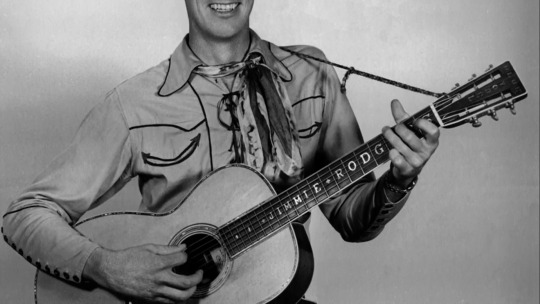





Country Music: A Film by Ken Burns(2019)
#television#documentary#country music: a film by ken burns#ken burns#ernest tubb#jimmie rodgers#country music#vintage#...
20 notes
·
View notes
Text
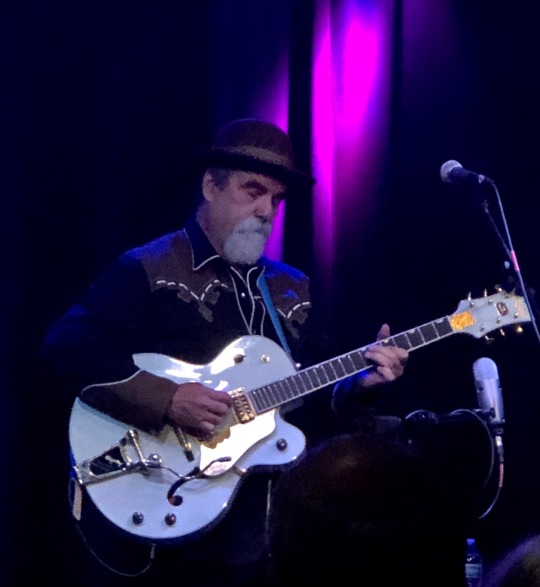
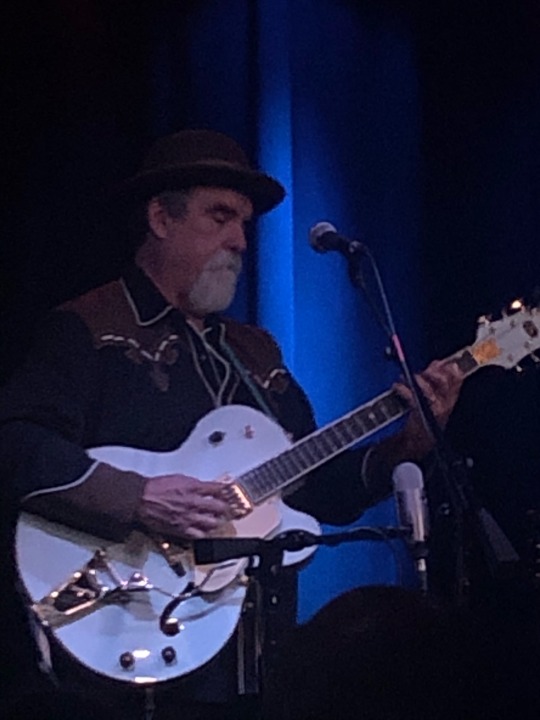


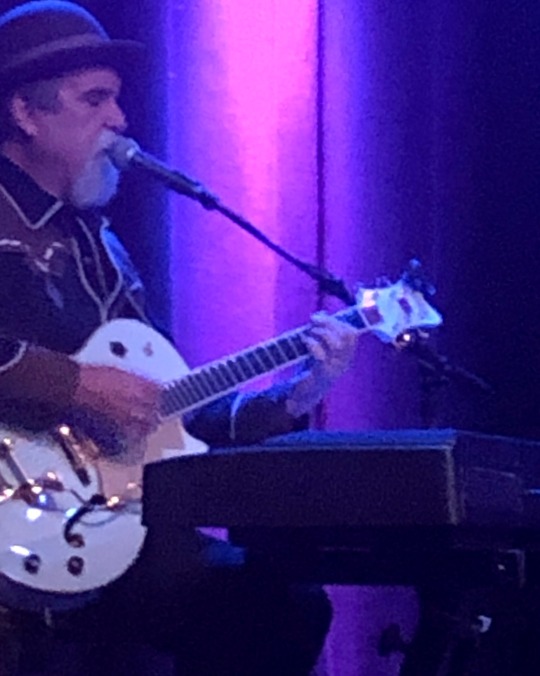

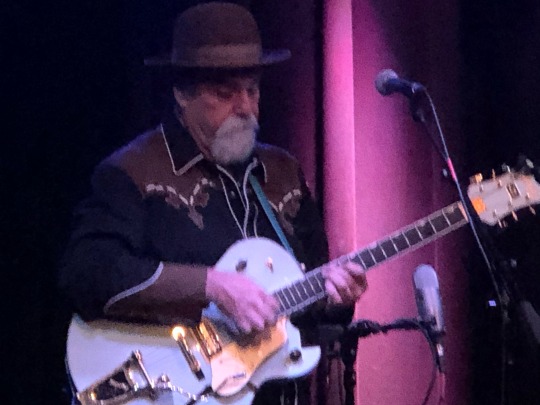
Darrell Scott at Natalie's Coal Fired Pizza and Live Music, Worthington, Ohio, Sept. 29, 2019
The last time Darrell Scott visited central Ohio, he was on the road with the Zac Brown Band and found himself playing to 80,000 people inside Ohio Stadium.
"That was wild," he said. "I'm glad to have found another place to play in Columbus."
Scott was speaking Sept. 29 from the stage of Natalie's Coal Fired Pizza and Live Music where perhaps 80 people watched and listened to him put on spellbinding solo concert that touched on country, blues, jazz, folk, rock, gospel and more over the course of an hour and 45 minutes.
Scott - who's toured and recorded in Guy Clark and Robert Plant’s bands, written songs for the Dixie Chicks ("Long Time Gone"), released a slew of acclaimed solo albums and whose "You'll Never Leave Harlan Alive" is a modern classic - is a musician's musician, a fancy term for a criminally underappreciated talent. But he seemed happy in the cozy confines of the pizza joint. And he delivered the goods.
Accompanying himself on hollow-bodied electric guitar, six-string acoustic guitar and piano, Scott previewed tracks from the four albums, including a Hank Williams tribute, he's working on - "It sounds crazy, but it's just music," he said - sung Joe South's "Games People Play," briefly turning the restaurant into a church with his soulful electric piano; played the Carter Family's "Keep on the Sunny Side," which he put in his sets after watching "Country Music: A Film by Ken Burns;" and honored a request for "River Take Me" after telling the fan, "It's been switched to 'Reefer Take Me,'" which it had not.
With a bushy, white goatee and dressed in a brown, Western-style shirt and bowler hat, Scott was a fountain of music that poured forth seemingly without effort. He often backed away from the mic between verses to play jazzy or blues-tinged solos on his electric guitar and did such with such a precise touch, so much texture, they never sounded empty in the absence of backing musicians. On acoustic guitar, Scott plays with subtle power, coaxing big sounds from the instrument that looks so small against his large frame.
In Scott's hands and voice, Clark's "Desperados Waiting for a Train" became a joyful singalong. Townes Van Zandt's "White Freightliner Blues," meanwhile, was played to pin-drop silence and Scott's resounding voice and forceful, blues riffs filled the restaurant with the aura of sweet trouble in mind.
Playing without a setlist as per typical, he took his guitar with him when he sat down at the piano for "Harlan." Switching instruments seamlessly as he sung about the hardscrabble Kentucky town where the sun comes up about 10 in the morning … and goes down about 3 in the day, Scott was in that moment a profoundly talented multi-instrumentalist, a sharp observer of cultural and economic injustices, a resounding vocalist capable of rising and falling as his words demand and a man who should be playing bigger venues.
He was - and is - a criminally underappreciated musician's musician and songwriter's songwriter.
Grade card: Darrell Scott at Natalie's Coal Fired Pizza and Live Music - 9/29/19 - A
9/30/19
#darrell scott#guy clark#robert plant#led zeppelin#the zac brown band#hank williams#townes van zandt#joe south#the dixie chicks#the carter family#country music: a film by ken burns#ken burns#pbs
2 notes
·
View notes
Photo

The Story: Ken Burns’s ‘Country Music’ Traces the Genre’s Victories, and Reveals Its Blind Spots
The Writer: Jon Caramanica
#ken burns#country music#documentaries#music documentaries#music#new york times#jon caramanica#film reviews#critics notebook#music history
0 notes
Photo
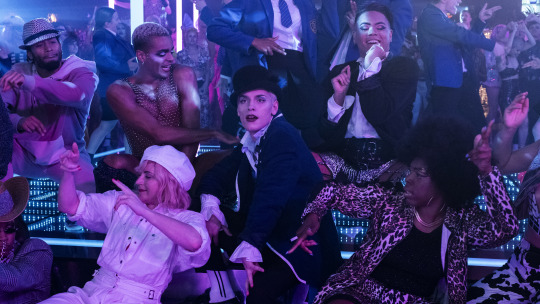
Wigging Out.
Choreographer and director Jonathan Butterell tells Gemma Gracewood about stepping behind the camera for Everybody’s Talking About Jamie, his love for Sheffield, and making sure queer history is kept alive. Richard E. Grant weighs in on tolerance and Thatcher.
Of 2021’s many conundrums, one for musical lovers is why the narratively problematic Dear Evan Hansen gets a TIFF premiere and theatrical release this month, while the joyously awaited Everybody’s Talking About Jamie went straight to Amazon Prime.
And yet, as the show’s lyrics go, life keeps you guessing, along came a blessing. There’s something about the film streaming onto young people’s home screens, with its moments of fourth-wall breaking where Jamie speaks straight to the viewer, that feels so important, given the content: a gay teen whose drag-queen destiny sits at odds with the less ambitious expectations of his working-class town.
Director and choreographer Jonathan Butterell, who also helmed the stage production (itself inspired by Jenny Popplewell’s 2011 BBC documentary, Jamie: Drag Queen at 16) agrees that the worldwide Amazon release is a very good silver lining. “I made the film for the cinema but, in 250 territories across the world, this is going to have a reach that—don’t get me wrong, cinema, cinema, cinema, collective experience, collective experience, collective experience—but it will get to people that it might not have got to before.

Jonathan Butterell on set with star Max Harwood, as Jamie.
“It feels as niche a story as you could possibly be. But also for me, I wanted it to feel like a universal story, that it didn’t matter where on any spectrum you found yourself, you could understand a young person wanting to take their place in the world freely, openly and safely.”
Everybody’s Talking About Jamie, with screenplay and lyrics by Tom MacRae and songs by Dan Gillespie Sells, sits neatly among a series of very specific feel-good British films about the working class experience, such as Billy Elliot, Kinky Boots and Pride. The film adds some historical weight to the story with a new song, ‘This Was Me’, which allows Jamie’s mentor, Hugo (played by Richard E. Grant), to take us into England’s recent past—the dark days of the discriminatory Section 28 laws, at a time when the HIV/AIDS epidemic was still ravaging the community.
Hugo’s drag persona Loco Chanelle (played in the flashback by the stage musical’s original Jamie—John McCrea from Cruella and God’s Own Country), sports a wig that looks suspiciously like the Iron Lady’s unmistakable head of hair. Grant confirms that was Hugo’s intention. “His heyday was in the 1980s, so as a ‘fuck you’ to Mrs Thatcher, what better than to be dressed up like that, at six-foot-eight, with a wig that could bring down the Taj Mahal!”

Richard E. Grant as Hugo, getting to work on Jamie’s contours.
In light of the current pandemic, and the fact that the 1967 legalization of homosexuality in Britain is only “an historical blink away”, Grant’s hope is for more tolerance in the world. “Maybe Covid gives people some sense of what that was like, but with Covid there’s not the prejudice against you, whereas AIDS, for the most part in my understanding, was [seen as] a ‘gay disease’, and there were many people across the globe who thought that this was, you know, whatever god they believe in, was their way of punishing something that they thought was unacceptable.
“The message of this movie is of inclusivity, diversity, and more than ever, tolerance. My god, we could do with a dose of that right now.”
Read on for our Q&A with Jonathan Butterell about the filmic influences behind Everybody’s Talking About Jamie.

Hugo in a reverie, surrounded by his drag menagerie.
Can we talk about the new song, ‘This Was Me’, and the way you directed it in the film? It’s a show-stopper, with Richard E. Grant singing in that beautiful high register, and then moving into Holly Johnson’s singing, as you go back in time to show that deeply devastating and important history.
Jonathan Butterell: It felt inevitable, the shift, and necessary. Myself, Dan Gillespie Sells, the composer, and Tom MacRae, the screenwriter, we created this piece together, the three of us, and it’s a film by the three of us. We lived through that time, we went on those marches. Actually, in one of those marches [shown in flashback], Dan’s mum—actual mum—is in a wheelchair, by a young boy who was holding a plaque saying “my mum’s a lesbian and I love her”.
That is Dan with his mum back in the day, and it all speaks to our stories and it moves me, I can see it’s moving you. It moves me because I lived through that time, and it was a complex time for a young person. It was a time that you felt you had to be empowered in order to fight, and you felt very vulnerable because of the need to fight. And because of that disease, because HIV was prevalent and we lost people—we lost close people—it was a difficult time. I wanted to make sure that that story kept being told and was passed on to the next generation.
It’s so important isn’t it, to walk into the future facing backwards?
It still exists, that need to fight still exists. The conversation, yes, has moved on, has changed, but not for all people and not in all communities.
What would be your go-to movie musical song at a karaoke night?
My goodness. There’d be so many.
I mean, is it going to be a Cabaret, a Chicago showstopper, or something more Mary Poppins, something from Rent?
I think what I would go to, which is what I remember as a little boy, is Curly singing ‘Oh, What A Beautiful Mornin’. It’s such a kind of perfect, beautiful, simple song. That, and ‘The Lonely Goatherd’, because I just want to yodel. It would be epic. Trust me.
What is the best film featuring posing and why is it Paris Is Burning?
It’s always Paris Is Burning. Back in the day, I was obsessed with Paris Is Burning, I was obsessed with that world. In fact, at one moment I even met [director] Jennie Livingston in trying to make a theater piece inspired by that. I lived in New York for eleven years and I met Willi Ninja. I just adored everything about him, and he would tell me stories. And again, it was so removed from the boy from Sheffield, I mean so far. That New York ballroom scene was so removed from my world, but I got it. Those two boys at the top of the film, I just wanted to be one of those boys who just hung out outside the club.

Harwood and Butterell on set, with Lauren Patel (right) as Jamie’s bestie Pritti Pasha.
What films did you and Tom and Dan look at to get a feeling for how to present the musical numbers?
Actually, a lot of pop videos, from present day to past. There’s an homage, in the black-and-white sequences, to a little ‘Vogue’ Madonna moment. Pop is very central to me in this story because pop is what a working-class kid from a working-class community will be listening to. That’s in his phone, that’s in his ears. Not that many young people listen to much radio at this moment in time, but that’s what will be on Margaret’s radio, that’s what’s coming into the kitchen. And that was central to the storytelling for me.
Bob Fosse also really influenced me, and particularly All That Jazz and where his flights of imagination take him. I felt that was so appropriate for Jamie, and again in a very, very different way, but I could see how Jamie’s imagination could spark something so fantastical that would lead him to dance, lead him to walk on the most amazing catwalk, lead into being in the most fabulous, fabulous nightclub with the most amazing creatures you’ve ever met in your life.
For me personally, the film that most inspired me was Ken Loach’s Kes, because that is my community. Both the world in which Jamie exists—Parsons Cross council estate, is my world, is my community—and the world of that young boy, finding his place in the world with his kestrel friend, I remember identifying with that boy so clearly. He was very different from me, very different. But I got him, and I felt like Ken Loach got me through him.
Ken Loach made a few films set in Sheffield, didn’t he? But also, Sheffield is a setting and an influence on The Full Monty, The History Boys, Funny Cow and that brilliant Pulp documentary. So Jamie feels like a natural successor.
It absolutely does. Sheffield’s where I grew up, it’s my hometown. Although I moved away from it, I always return. To have a chance to celebrate my community, and particularly that community in Parsons Cross council estate. If you’re in Sheffield and you’re in a taxi and you said, “Take me to Parsons Cross,” they’d say, “Well, I’ll drop you there, but I’m not staying.” Because again there’s a blinkered view of that community. And I know that community to be proud, glorious and beautiful.
And yes, that community, particularly through the ’80s, really suffered because some of that community would serve the steelworks and had three generations of unemployment, so they became disenfranchised because of that. But the community I grew up in, my Auntie Joan, who lived on that road, literally on that road, was a proud, working class, glorious woman who served chips at school.
Aside from Everybody’s Talking About Jamie, what would be the most important queer British cinematic story to you? (And how do you choose between My Beautiful Laundrette and God’s Own Country?!)
You can’t. My Beautiful Laundrette influenced me so much because, one, Daniel Day Lewis was extraordinary in that film, and two, because of the cross-cultural aspect of it. I went, “I know this world”, because again I grew up in that world. And it affirmed something in me, which is the power and the radicalness of who I could be and what I could be.
With God’s Own Country, when I saw that film—and that was Francis’ first film, which I thought was extraordinary for a first-time filmmaker—I knew he knew that world from the inside, from the absolute inside. And I know what that rural community was like. I read that script, because we share agents, and I was blown away by it—again, because of the two cultures coming together.

Jamie Campbell, the film’s real-life inspiration, with screen-Jamie Max Harwood.
Richard E. Grant’s character, Hugo, is such a pivotal mentor for Jamie. What did you need to hear from a mentor when you were sixteen?
Don’t let yourself hold yourself back, because I think it was me who put some limitations on myself. And of course I came from a working-class community. I was a queer kid in a tough British comprehensive school. And did I experience tough times? Yes I did. And did I deal with those tough times? Yes I did. But the song that speaks to me mostly in this is ‘Wall in my Head’, in which Jamie takes some responsibility for the continuation of those thoughts, continuations of the sorts of shame, and that’s a sophisticated thing for a sixteen-year-old boy to tackle.
I also was lucky enough to have a mother like Margaret—and a dad like Margaret as well, just to be clear! And I remember my mum, at seventeen when I left home, just leaving a little note on my bed. It was quite a long letter. She said, Jonathan, you’ve probably chosen to walk a rocky path, but don’t stray from it, don’t steer away from it. That’s the path you've chosen, there may be rock-throwers along the way, but you’ll find your way through it. That stayed with me and I think that’s what resonates with me. And when I saw that documentary, Jamie: Drag Queen at 16, I felt that that sparked the need for me to tell that story.

Sarah Lancashire as Jamie’s mum, Margaret New.
We need more mums and dads like Margaret, don’t we?
We do, we do. And the wonderful thing is, Margaret Campbell will say it and I think Margaret New in the film will say it: she’s not a Saint, she’s an ordinary mum. And she has to play catch up and she doesn’t understand in many ways, and she gets things wrong and she overprotects. But she comes from one place and that is a mum’s love of her child and wanting them to take their place safely in the world and to be fully and totally themselves.
Related content
Eternal Alien’s list of films Made in Sheffield
Letterboxd’s Camp Showdown
Persephon’s list of films recommended by drag queens
Passion’s list of films mentioned by Jaymes Mansfield in her Drag Herstory YouTube series
Follow Gemma on Letterboxd
‘Everybody’s Talking About Jamie’ is streaming now on Amazon Prime Video.
#everybody's talking about jamie#max harwood#john mccrae#richard e. grant#sharon horgan#jonathan butterell#musicals#drag queen#queer film#lgbtqia cinema#british cinema
18 notes
·
View notes
Note
Grace, i really enjoyed/still enjoy reading your fic feat. britney spears LOL --- this fic is a treasure...! but i'll save my rants for comment section on ao3. why i'm here: i'm about to start on your western au, but i'm not familiar with the genre so my question is, do you have any list of movies/shows that might help me visualize while reading it? also, check your kofi page >:D

Oh my goodness YOU ARE TOO KIND AHHHHH !!!!!!!!Thank you from the bottom of my heart !!! Omfg I was in shock when I saw this message I am in such gratitude and I’m kissing you as we speak 🗣
I’m so so glad you enjoyed the fic and I hope you like RNR too !!! Western films are all over the spectrum and they’re often about revenge, community, and fighting corruption (those are the best ones IMO) Classic spaghetti westerns are still considered some of the best films ever made for a reason but they can also be super long, with little dialogue, very dramatic, very gripping and violent. The land around the character is always a character itself in these stories, def one of the tenets of the western genre, BUT…… it’s a nonsensical white myth that the ‘frontier’ was untamed and uncivilized, and it really functions as revisionist history in the worst way sometimes. As usual, media affects and reflects our reality and history, but people have to create that media, and most of the people creating these, Wild West, empty frontier, battling with ‘scary tribes’ films were white men (or Italians..) who wanted and needed people to think the west was empty, uncivilized, and needed to be protected and claimed by white people.
Writing RNR has led me to learn so many new things and I think once you get interested in the time period and keep digging, you will learn so much you might have never been taught in school or seen in a movie. But I also keep in mind this time period was not that long ago and what I can research for fun is real shit that still affects people today. When you start thinking about the horrible genocide, displacement, murder, and slavery that America was founded on, the western genre starts looking pretty… out of touch, honestly. The experiences of both enslaved and free Black people, Mexican people whose land we were taking, and Chinese immigrants who basically built the railroad system that allowed more travel to the west- they’re pretty much completely ignored in this genre, and Indigenous tribes are very cruelly represented, if they are at all, despite the objectively horrible way white Americans treated (and treat) them. And forget about gay or trans people! I would love to see WAY more films/media in general that really centers the people who weren’t lone gun slinging womanizing white cis cowboys (also a myth, most cowboys were Black or Mexican, and they were frequently, secretly fond of each other) so if anyone ever has any recs….. please drop them to meeeee!!! I heard The Good The Bad and The Weird is a really good non-American western, that’s next on me list. That being said here are a bunch of movies I’ve watched that influenced me in some kinda way. They’re not all ‘great’ or historically accurate but….. neither is RNR LOL. Posse for example is pretty infamous for that but it’s totally worth a watch for its story about Black cowboys! And you’ll also notice a trend of like, the white savior and ‘noble savage’ stereotype if you start watching westerns. Hostiles is a good example of this, I think they wanted the story to be inclusive of the Cheyenne Nation POV/history but then they should have actually centered those characters instead of the white people trauma but I digress……I put an asterisk next to the ones I personally think are most accessible as far as plot/general vibes. I’m not like endorsing these all as Amazing Historical Films obviously but here they are!

(I put Seven Samurai on there as it is formative in general if you haven’t seen it yet. I think I was also watching a lot of Westworld when I first started writing RNR, and that has some beautiful settings and costumes, [I deleted a long rant about westworld here lol], and True Grit was actually the film that set off my whole RNR writing experience.)
Many western films or what we think of as the ‘wild west’ time period overlaps with the American Civil War. A lot of people point to the Ken Burns doc as the definitive place to start and I certainly watched it in school but again, it’s a very white man-centric doc and even actively sympathetic at times to the Confederacy so.. don’t bother with that. This article discussing it is worth a read.
Honestly, scrap this entire list and just watch Blazing Saddles. It will explain everything.
Some other good resources to start with
Read about BASS REEVES!! The legend - the Lone Ranger!
Western Violence, Law, and Order
What Wild West saloons were really like
How did westward expansion impact the Native Americans?
Black Cowboys: the overlooked heroes of the west
The true origin of country music
We Shall Remain
The Forgotten Trans History of the Wild West
Ok this is getting super long but I hope that is a good place to start!!! Also here is my huge 350+ song playlist I listen to when I write, has a large mix of different genres and artists. You can also check out my rnr stuff tag or just the rivers and roads tag, I’m working on consolidating them into one but that’s where I sequester the vibes as I find them. ENJOY I LOVE YALL SOOOOOO MUCH
#rivers and roads#ask tag#I hope all those links work#sorry this took a while my computer broke and doing everything on my phone takes forever🥲#*charger. computer charger not my computer thank god lol#the Wow!! cool cowboys !! to The Wild West Is a Myth Perpetuated By White Supremacy to Wow !! Cool cowboys !! pipeline
8 notes
·
View notes
Link
Please Share
As seen on
The Whole World News™
#thewholeworldnews
#nbc #abc #cbs #foxnews
0 notes
Photo



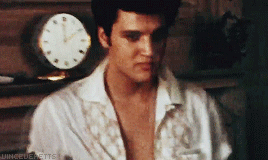


Previously unreleased footage of Elvis Presley, c. 1957.
Country Music | A Film by Ken Burns (2019)
930 notes
·
View notes
Text
Dust Volume 6, Number 9

New Bomb Turks
Late summer in the oddest year in memory, and we are still, improbably, deluged by music. The world, it seems, will go out with a bang and a whimper and a steady four-on-the-floor, and we at Dusted expect to have headphones on when it all blows to smithereens. This month’s Dust covers the usual gamut, from milestone ambient reissues to several varieties of improvised jazz, from eerie folk to honest punk rock, from surprising debuts to unlooked for but welcome re-emergences. Two hurricanes, a hinged and unhinged convention, wildfires, confusing hybrid school plans and scorching days won’t stop us, and they shouldn’t stop you either. Some days music is the only thing that makes sense. Listen along with Ian Mathers, Bill Meyer, Tim Clarke, Jennifer Kelly, Justin Cober-Lake, Andrew Forell, Ray Garraty, Nate Knaebel, Jonathan Shaw, Ian Forsythe and Patrick Masterson.
Aix Em Klemm — Aix Em Klemm (Kranky)
Aix Em Klemm by Aix Em Klemm
If there’s one word that probably applies to most fans of Stars of the Lid and its many peers and offshoots, it might just be “patient.” Which means the fact that Aix Em Klemm, the so-far one-off duo between SotL’s Adam Wiltzie and Labradford/Anjou’s Robert Donne, put out this stunning record just under 20 years ago and haven’t followed it up yet is probably regarded more as unfortunate than maddening. With Kranky issuing Aix Em Klemm on vinyl for the first time, though, and even saying of the duo “they still collaborate musically so new Aix Em Klemm recordings remain a possibility,” it’s a perfect time to both appreciate what they did actually give us and maybe just gently lament that there hasn’t been any follow up (yet?). From the reserved vocals that introduce “The Girl With the Flesh Colored Crayon” before it ebbs into beautifully reassuring drones, to the closing, improv-ed highlight “Sparkwood and Twentyone” (written and recorded on the day, after a year or more of trading tapes and mulling a collaboration), Aix Em Klemm stakes out its own unique place in the oeuvres of its creators and its transporting enough that a little over 40 minutes never feels like enough. Still, we can wait for more.
Ian Mathers
Lina Allemano’s Ohrenschmaus — Rats and Mice (Lumo)
Rats and Mice by Lina Allemano's Ohrenschmaus
Pop the word Ohrenschmaus into a translator program and you’ll find that it’s German for “ear candy.” The choice of language makes sense, since the name applies to Canadian trumpeter Lina Allemano’s Berlin-based trio. But the imagery breaks down, since the music that she, electric bassist Dan Peter Sundland and drummer Michael Griener play isn’t sweet and easy. Allemano’s compositions are concentrated, full of events that are involving to follow and demanding to negotiate. One might expect the group’s configuration to leave plenty of room, but between the contrasting written events and the enthusiastic elaborations that the players work upon them, this music does not feel spacious at all. Griener shifts between skin and metal surfaces, and Sundland detonates flurries of activity, but the busyness of their activity never seems gratuitous. No, it’s just the thing to amplify the eventfulness of their leader’s fluent and wide-ranging playing.
Bill Meyer
Jaye Bartell — Kokomo (Radiator Music)
Kokomo by Jaye Bartell
2016 Light Enough introduced me to Jaye Bartell’s pleasingly deep and measured vocal delivery and his elegant way with a tune, reminiscent of Leonard Cohen or M. Ward. There and on this new album, his words have the precision and droll humor of a writer sharply aware of the impact of a well-turned phrase. Kokomo takes its title from the faintly ridiculous and pathologically catchy Beach Boys song featured in the soundtrack to Cocktail. Bartell posits here that too often we live trying to bridge the gulf between our dreams and reality — and how tragi-comic this can be. Tellingly, Bartell’s music is sober and deftly played, but with a lightness to its step and a glint in its eye. (Look no further than the lovely, lilting “Sky Diver,” with its brushed drums and harpsichord.) He’s a smart, reassuring companion, someone who has gone the extra mile for his craft and doesn’t see the need to jump through hoops to catch your attention.
Tim Clarke
Kath Bloom—Bye Bye These Are the Days (Dear Life Records)
Bye Bye These Are The Days by Kath Bloom
You might know Kath Bloom from her 1980s work with Loren Mazzacane Connors or from her spectral “Come Here” featured prominently in the 1995 film “Before Sunrise.” Her high flickering soprano, fluted with vibrato, is instantly recognizable, grounded in down-to-earth folk music, but tinged with otherworldly spiritual resonance. And oddly, her voice hasn’t changed much over the years. Up to last year (before the world fell apart), she was still performing periodically in Connecticut and Western Massachusetts, and now we have a new record from her, some 40 years past her Daggett Records debut. Here, her songs are gently shaped around her distinctive voice and twining dual guitars (she plays with fellow Connecticut musician Dave Shapiro of Alexander), yet not soft. They have a wiry idiosyncracy and a resistance to cliché, and the way the guitars work together is rather lovely. I like “When Your House Is Burning,” a song where the central metaphor—a burning house—is so precisely described that it may not be a metaphor at all, not a stand-in for musings on the value of connection, the fleetingness of stuff, but the thing itself. Bloom adds harmonica for the pensive “How Do You Survive,” a song about aging with grace and humor, and in her worn-in voices, the melody stretches out like spider web, transparent but nonetheless very strong.
Jennifer Kelly
Catholic Guilt — This Is What Honesty Sounds Like (Wiretap)
youtube
Catholic Guilt really want us to get their honesty (there's no irony in the new EP's title This Is What Honesty Sounds Like). Authenticity has long been a vaunted (or derided) element of pop music, but the Melbourne-based quintet aren't posturing. They deliver straightforward rock with straightforward thinking, but that doesn't mean the music's easy. The group looks at the world with a mix of dismay and hope, as if they recognize that life is difficult but we don't have to let it kill us. The new EP leans into pop-punk, letting the upbeat approach direct the energy of the two standout tracks. “A Boutique Affair” looks at the challenges of increasing isolation as we age: “It's hard to make friends in your 20s / It's even harder to make 'em in your 30s / At this point I'm really dreading / The thought of making it to my 40s.” Vocalist Brenton Harris might wonder why we should bother growing, but he's determined to age loudly. Single “The Awful Truth” turns its pop guitars into rage as it looks at the sex abuse scandal in the Catholic church. By the time Harris says, “I can't wait to watch you burn,” it's clear that the truth may be awful, but at least it's honest.
Justin Cober-Lake
Cutout — Cutout (Driff)
Cutout by Jorrit Dijkstra, Jeb Bishop, Pandelis Karayorgis, Nate McBride, Luther Gray
The name Cutout implies removal, but that won’t get you very far in understanding this Boston-based jazz quintet’s music. Quite the contrary, Cutout’s performance dynamic involves judicious addition by a group of musicians who have made a long-term commitment to playing together. Alto and soprano saxophonist Jorrit Dijkstra and pianist Pandelis Karayorgis have been business and creative partners for years. They are the co-operators of Driff Records, all of whose releases feature one or both musicians, and they have shared several ensembles, including the large band Bathysphere, the Steve Lacy-themed Whammies, and Cutout. Trombonist Jeb Bishop, bassist Nate McBride, and Luther Gray often show up in these groups, and their smooth execution of sharp corners and sudden turnarounds reflects their shared understanding. What distinguishes Cutout from their other bands is the way they bring material by all five members into the set. Some of this album’s six tracks are single compositions, but others are sequential suites joined by improvisations. There’s plenty of dynamite soloing at work here, but the most intriguing turns come when one of the players elegantly links a couple of his bandmates’ compositions.
Bill Meyer
Tim Daisy & Ken Vandermark — Consequent Duos: series 2a (Audiographic)
Consequent Duos: series 2a by Tim Daisy & Ken Vandermark
Ken Vandermark is a notoriously busy guy; in any ordinary year, the multi-reedist logs an extraordinary number of miles traveled, gigs played, records released and musical partners engaged. This 75-minute long recording braids together three threads of inquiry. It inaugurates the second volume of Consequent Duos, a shelf-full of improvised duos played in North America, mostly with Americans. And as with the other volumes of series 2a, it is a download-only release, part of a sequence of album-length recordings that may not be deemed to be major efforts, but that nonetheless don’t deserve to be filed away forever on some hard drive. Finally, it shares one night in Vandermark’s two decades and counting relationship with drummer Tim Daisy. It takes about ten seconds of any random selection from this concert recording, which preserves what went down one Sunday night in August 2011, to hear why these guys keep working together. The trust and empathy forged by playing literally hundreds of concerts together manifests in music that feels effortless, no matter how technically demanding it actually is. Whether it is the sound of drums being played at a galloping pace with the lightness of knitting needles while the baritone sax pops and roars eruptive masses of sound, or the bass clarinet leaping and trilling with joyous abandon while the percussion swings with dance beats that could get you arrested in certain countries, these guys know just how to make each other sound really good.
Bill Meyer
The Dillards — Old Road New Again (Pinecastle)
youtube
The Dillards' influence on popular music outstrips their own fame (they might even be as well remembered for appearing on The Andy Griffith Show as they are for their proper recordings). The group became an important part of the development of country-rock, especially as they expanded the possible sounds of bluegrass. Nearly 60 years after their first release, they return with Old Road New Again. Only Rodney Dillard (sounding younger than his age) remains from the initial lineup, but he brings along a number of guests to fill out his act. Don Henley appears, and if “My Last Sunset” drifts into Eagles territory, that's no surprise, but Ricky Skaggs, Sam Bush, and others prove the act has plenty of flexibility left in it, whether cutting an original or reworking a classic like “Save the Last Dance.” The album winds down with “This Old Road” and a recounting of some musical history through playful allusion. Even as Dillard looks back, though, he thinks about new ways to push forward. Although the record could work just as reminiscence, the artists show more interest in what comes next.
Justin Cober-Lake
Fire! Orchestra / Krzysztof Penderecki — Actions (Rune Grammofon)
Rune Grammofon · Fire! Orchestra - Actions (excerpt)
The Fire! Orchestra is not so much Swedish saxophonist Mats Gustafsson’s big band as his big house, the place where he can bring his myriad interests together and invite them to interact. They have already taken on free jazz, krautrock and abstracted songcraft, so why not one of the earliest documents of post-third stream classical-jazz interaction? Polish composer Krzysztof Penderecki originally composed Actions for Free Jazz Orchestra after hearing the Globe Unity Orchestra and handed it off to trumpeter Don Cherry to realize its first performance in 1971. Cherry’s imprint upon Gustafsson is deep; where do you think his long-running trio, The Thing, got its name? But this is no mere recreation. Some of Fire! Orchestra’s members weren’t even alive when the first version was performed, so the task is to find a way of playing the piece that makes sense now. So, they stretch things out, letting passages evolve organically. Special credit is due to the three-piece, whose contributions melt and glow.
Bill Meyer
Ganser — Just Look At That Sky (felte)
youtube
Chicago quartet Ganser explores the bewilderment, claustrophobia and anxiety induced paranoia of the times on their latest album Just Look At That Sky. Brian Cundiff’s lockstep drumming anchors the record as Charlie Landsman whips out driving chords and intricate riffs that summon touchstones like Ian MacKaye, Thurston Moore and Rowland S Howard and push the songs to the edge of control. Spiky, equally detached and declamatory, Alicia Gaines (bass) and Nadia Garofalo (keyboards) share vocal duties working inside the kinetic rhythms to explore an interior world reactive to circumstance but seeking paths forward.
Centerpiece “Emergency Equipment and Exits” demonstrates what the band can do when they stretch out and build layers of dread; Cundiff and Gaines drop into a propulsive groove as Gaines sings of parties past and now lost to the new reality: “Swallowing negative space/Like DB Cooper falling/Until I too am nothing/And it all seemed so big.” The tempo drops, a lonely keyboard riff, the song builds as Gaines intones “It’s a long way down” and Landsman’s guitar howls into the ether. The combination of exhilaration and enervation encapsulates the power that makes Ganser stand out amongst their peers working at similar intersections of post punk and art noise.
Andrew Forell
Godcaster — Long Haired Locusts (Ramp Local)
Long Haired Locusts by Godcaster
Possibly it’s the pandemic, though the trend seems to predate early 2020, but we have not heard a lot of over-stuffed, over-instrumented, over-the-top art-prog ensemblery lately. Godcaster, from Philly, busts the one-guitarist-on-the-couch paradigm wide open in this manic, Zappa-esque adventure. First of all, there are half a dozen musicians, augmenting the usual bass/drums/guitar with outre axes like flute, trombone and a variety of synthesized keyboards. All six of them lock into wiggy, hyper funky overdrive in opening salvo “Even Your Blood is Electric.” It’s a righteous groove, a tight and feisty disco extravanganza that mutated in the lab, but that sells it short and blurs the complications. Other cuts take the temperature down, but not the oddity. “Apparition of Mother Mary in My Neighborhood” feels like an almost pop song, though conceptualized by a 12-tone composer and interpreted in odd-numbered time signatures. Long Haired Locusts is too precise and earnest to be a gag, but an anarchist sense of humor pops up, as in the single “Don’t Make Stevie Wonder Wonder,” a Curlew-ish irregular jam punctuated with jump-rope chants. All these cuts have a lot of moving parts, a sense of play and a manic attention to detail, and if you’re sick of sad folksinger live streams, Godcaster could be just what you’re looking for.
Jennifer Kelly
Haptic — Uncollected Works (2005-2010) (Haptic)
Uncollected Works (2005-2010) by Haptic
Haptic is best characterized as a Chicago combo. Even though one or another of its members has lived out of town for roughly a third of their existence, the influence that such a situation has on their work’s pace only confirms that they are a band that needs to share space to get much done. The recordings on this DL-only collection of compilation contributions and curios dates from the first third of their existence, when Steven Hess, Joseph Clayton Mills, and Adam Sonderberg got together on a weekly basis. Heard end to end, these tracks don’t sound much alike. But whether the project at hand is framing a few piano noises with collected sounds, stretching out a bell’s toll, or patiently exploring the potential of signal corps training jazz, it sounds like the work of a common understanding about how sound can be molded and reframed.
Bill Meyer
Boldy James — The Versace Tape (Griselda Records)
youtube
On his third album this year, Boldy James pairs up with Jay Versace, but despite a change in producers, there is little to distinguish the three tapes. After a long hiatus Boldy churns out music to flood the market, and every new tape causes head-scratching. Was it necessary to release this? As a stone cold pro, Boldy never repeats himself. He also never says anything new. His blueprint is all business talk with designer names splashed here and there: “First come, first serve, first through the third, no dealings \ Mama, I apologize, ain't mean to hurt your feelings.” When he steers towards Mafia references in his songs he sounds a bit archaic (but he already sounded retro when he first started in early 2010s). On The Versace Tape, as always, he raps like he’s not giving us the whole picture. He’s holding back, but maybe what’s left unsaid is the best part.
Ray Garraty
Madeline Kenney — Sucker’s Lunch (Carpark)
youtube
How big can a pop song go? This Oakland songwriter’s third full-length is boundlessly expansive without being particularly loud, the choruses swelling effortlessly, like a soap bubble blown to the size of your head. Kenney worked with Wye Oak’s Jenn Wasner and Andy Stack to produce Sucker’s Lunch and taps Lambchop’s Kurt Wagner, Boy Scout’s Taylor Vick and film composer Stephen Steinbrink for vocals. “Tell You Everything” is translucently gorgeous, layers of guitars, drum, percussion and saxophone shifting in iridescent patterns that never overwhelm its sleepy vocals. “Jenny” increases the friction, with a hard beat, surging synths and shoe-gazey gloss on the guitars, but sweetness in the vocals. Kenney’s subject matter is love and its complications, but she ends the disc in “Sweet Coffee” with a lucid purity. “I’m making coffee,” she croons in a breathy voice out of dreams, “Won’t you sit with me?” Sure, let me pull up a chair.
Jennifer Kelly
Josh Kimbrough — Slither, Soar and Disappear (Tompkins Square)
Slither, Soar & Disappear by Josh Kimbrough
Writing an album in the spaces around an infant’s schedule is a delicate business, but Josh Kimbrough managed it quite well on this lovely album. His finger-picked rambles unfold like the slip-sliding time in a baby’s first year, a tumble of frantic activity interspersed with quiet, contemplative intervals. Kimbrough, a veteran of the North Carolina-based Trekky Collective, plays softly but with precision on acoustic solo pieces like “Sunbathing Water Snake” and “Giant Leopard Moth,” but his work really takes on warmth and resonance when he invites collaborators into his quiet, sunlit world. Blues-flecked “Two-thirds of a Snowman” gains an eerie glow from Andrew Marlin’s mandolin, which echoes Kimbrough’s licks in an upper register like the light hitting a shadowy corner. A sustained synth note in “Glowing Treetops” glitters like the surface of a pond—that’s Jeff Crawford of the Dead Tongues, who also play some bass—while gentle bent guitar notes zing like mosquitoes off its clear, cool liquid surface. Bobby Britt loops lush fiddle flourishes around this and other Kimbrough melodies; a rich, subtle blend of string timbres enlivens many of these tracks. The natural world also makes its appearance as well, most prominently in weather-haunted “The Shape of the Wind Is a Tree,” though the album’s light, clean tone throughout is like an open window. And yet despite multiple intermeshing elements, the album works very gently, light and soft enough not to wake a sleeping little one. “Simon’s Lullaby,” near the end, is beautifully communal, supporting Kimbrough’s clear, pensive guitar with the reassuring throb of cello, the bright promise of flute. Much of child raising is a solitary process, but Kimbrough’s meditation on it is not.
Jennifer Kelly
Kimmig-Studer-Zimmerlin And George Lewis— Kimmig-Studer-Zimmerlin And George Lewis (Ezz-thetics)

Violinist Harald Kimmig, cellist Alfed Zimmerlin and double bassist Daniel Studer have been mapping out the possibilities of extra-idiomatic improvisation since 2009. They favor juxtapositions of raw and refined timbre, and in their roiling web of activity, the quicker a gesture passes, the more impact it seems to have. The Middle European trio matches up well with American trombonist/electronicist George Lewis, who is likewise devoted to making music spontaneously and unbounded by genre prescriptions or proscriptions. There are passages where it sounds like the four musicians have transcribed muttering and stifled laughter into musical activity. This incomprehensible vocal quality proves magnetic, drawing the listener ever deeper into the fray. While some might object to “chatty” improvisation, in this company, it’s a virtue.
Bill Meyer
Matmos — The Consuming Flame: Open Exercises in Group Form (Thrill Jockey)
The Consuming Flame: Open Exercises in Group Form by Matmos
Given the vigor with which Drew Daniel and MC Schmidt approach all of their work, it’s surprising to find Matmos’s new album, The Consuming Flame, to be somewhat lacking in cohesion. Like many of their previous releases there is a unifying concept — in this case, they corralled musical contributions recorded at 99bpm from 99 contributors — but it feels like the creative limitations they imposed on this project weren’t quite stringent enough. Inevitably, given the wide range of contributors (including Oneohtrix Point Never, Yo La Tengo and Mouse On Mars) and Matmos’s formidable technical virtuosity, there are plenty of satisfying passages that feature inventive vocal cut-ups, ear-catching beats and playful juxtapositions, but the presentation of these ideas within three continuous hour-long collages makes it hard to sift the gold as the music flows past. Bizarrely, the album’s presentation on Spotify is more listener-friendly, with each of the three discs broken down into digestible tracks that can be easily trimmed from the bigger picture to assemble your own collage of favorites.
Tim Clarke
Meridian Brothers — Cumbia Siglo XXI (Bongo Joe)
Cumbia Siglo XXI by Meridian Brothers
Eblis Alvarez, the sole musician behind the long-running Colombian space roots experiment known as Meridian Brothers, takes inspiration from like-minded predecessors in Cumbia Siglo XX for this electro-shocked take on coastal cumbia. Eerie blasts of jet-set synthesizer, buzzing funk bass and video game bleeps and bloops haunt the clip-clopping rhythms of these mad ditties. It’s like a Star Wars space port built on the verge of primitive villages, donkey tails swatting flies while lazer beams zip by. “Cumbia de la fuente” gene-splices syncopated hand-drum beats and traditional-sounding choruses with the splintered buzz of synth bass and glittery spurts of MIDI-generated arpeggios. It’s a hot tropical celebration lit by UFO glow. “Puya del Empresario” nudges a hip swaying cumbia rhythm to the foreground, but blares a rough-edged synth riff over it. “Cumbia del Pichaman” transforms Dusty Springfield’s “Son of a Preacherman” into a surreal technological marvel, buzzes and squeaks punctuating the offbeats like a DIY version of Zaxxon gone soft in the equatorial heat.
Jennifer Kelly
Nas — King’s Disease (Mass Appeal)
youtube
Like all of Nas’s output in this century, King’s Disease, his 13th album, is pretty much unlistenable. King from the title here has two meanings. Every black man is a king (every woman is a queen) or should be. And second, it reminds that Nas is a king of rap, even though his royal days are long over. But even kings had to live on crumbs of their fame. With regard to the current moment in history, the album compels the listeners to unite and wear their blackness proud. Nas’ idea for achieving that? Just listen to his truisms and patronizing rants. On “Ultra Black” it’s “We goin' ultra black, I gotta toast to that”. On ‘Til the War is Won”, dedicated to women, it’s “May God gives strength to women who lost their sons \ I give all I have 'til the war is won.” All Nas gives to a black community is his bad music and maybe some charity. Every track here is to some degree about empowering black people, yet the only person Nas ends up empowering is himself. Every line on King’s Disease is disguised as virtue signaling, and the last thing we all need now is patronizing advices from rap millionaires.
Ray Garraty
The New Bomb Turks — Nightmare Scenario: Diamond Edition (Self-released)
Nightmare Scenario - Diamond Edition by New Bomb Turks
It would be understandable if, upon hearing the New Bomb Turks 1993 debut full-length, Destroy-Oh-Boy!, you thought to yourself, "They'll never top this." You wouldn't necessarily be wrong, but you'd be neglecting a much larger story and a key release in their catalog, 2000's Nightmare Scenario. With their debut, the Ohio quartet built a distinct machine out of familiar parts: cheap-lager-fueled thrash, butterflyin'-around rock 'n' roll swagger and barstool-philosopher lyrics. And with the possible exception of fellow buckeyes Gaunt, no other band at the time combined those attributes in quite the same way. It was as if America finally had its own Saints. The Turks would go on to make five more LPs over the next decade. Though lost in the shuffle a bit after jumping to Epitaph in 1996, the band were never going to become darlings of that label's skater boi base anyway. You certainly can't blame them for trying to reach a new audience nor should you overlook the output from that era. 2000's Nightmare Scenario, their third for Epitaph, is gritty, witty, and so full of Midwest blastitude you'd think it was year zero at Datapanik (or at least 1991). Yet to hear the album in its original mixes by Detroit studio guru Jim Diamond, newly issued for the 20th anniversary of its release, is all the more gratifying. It's stripped of that extra coat of paint found on the original, and it reveals what a decade's-worth of relentlessly plying one's trade in the punk rock free market will get you. The Turks were an absolute musical force by this point: they could still hit warp speed but could also swing with the best of them. And frontman Eric Davidson is in full possession of his vocal gifts (always a key aspect of the band's sound), nestling into the groove like a Funhouse-era Iggy or leading the charge as needed. The 20th anniversary Diamond Edition of the album is a nice reminder of just how consistently good the New Bomb Turks were and a nice splash of Pabst in the face for anyone who slept on that reality the first time around.
NOTE: Never above a little frat boy humor, the Turks were always much more about mocking those particular attitudes than ever truly embracing them. With that in mind 100 percent of the digital will be donated to Black Queer & Intersectional Collective bqic.net and Columbus Freedom Fund www.instagram.com/columbusfreedomfund www.instagram.com/columbusfreedomfund.
Nate Knaebel
Siege Column — Darkside Legions (Nuclear War Now!)
Darkside Legions by Siege Column
Some thoughts that occurred on first listening to Darkside Legions, the new LP from Siege Column: Track one, “Devil’s Knights of Hell”: “Whoa, this is pretty nuts. Exciting — raw and barely coherent, but exciting.” Track three, “Snakeskin Mask”: “Okay, I get it. All this stupidity is just too frigging stupid. Enough, already…” Track five, “Funeral Fiend”: “Holy shit! I think this may be genius-level stupid!” And so on. The record keeps on doing that, and the listener (this one, anyways) keeps on generating phrases like “genius-level stupid” in an attempt to cope with the experience. Siege Column is constituted of two shadowy figures from somewhere deep in the chemically treated wilds of New Jersey, and for sure, this is music that could only come from New Jersey. I still can’t figure out if Darkside Legions is too moronic for words, or if that projection beyond words is the mark of some sort of greatness. Meanwhile, the next song is peeling out like a 1969 Chevelle that needs some serious muffler work, trailing empty cans of cheap domestic, wads of bloody paper towel and the smell of burnt hair. Yikes. Feel like I better catch up…
Jonathan Shaw
Smokescreens — “Fork in the Road” (Slumberland)
A Strange Dream by Smokescreens
A new single from LA’s Smokescreens is notably partly because David Kilgour took a hand in it, distilling the band’s jangly sweet sound in a Clean-like way, where the guitar comes coated in liquid clarity and everything else is drenched in beautiful fuzz. Even if you’ve been liking Smokescreens for a while, “Fork in the Road,” is something special, the thump of bass glowing quietly, the guitars cavorting, a synthesizer building dense shimmery textures, the chorus softly harmonized around a koan-ish verse. (How do you go straight at the fork in the road? ) The guitar solo two minutes in is worth the trip all by itself. If the upcoming album is anything like this tune, I’m in.
Jennifer Kelly
Matt Sowell — Organize Or Die (Feeding Tube)
Organize Or Die by Matt Sowell
Too often, the words “sounds like John Fahey” denote either laziness or a sparse descriptive vocabulary on the part of the people who utter them. But it cannot be denied, Matt Sowell sounds like he’s closely studied Fahey’s records, especially the less experimental ones of his Takoma/Vanguard period. There’s a similar melding of bluesy styling, compositional elegance, and emotional evocation. But Sowell’s motives are different. Where Fahey’s music looked at the snarl of personal memory and the blacker, deeper pit of his tangled subconscious, Sowell’s looks outward. Fahey tried to subdue demons within; Sowell calls out the devils of capitalism, and honors the purity of respect untainted by dollars or oil. Of course, since his music is purely instrumental, you can project whatever you want onto it. But in times like these, we need all the resistance and resonance we can get.
Bill Meyer
Treasury of Puppies — S/t (Förlag För Fri Musik)
Treasury of Puppies by Treasury of Puppies
The Gothenburg duo of Charlott Malmenholt and Joakim Karlsson’s debut release as the Treasury of Puppies is lo-fi depressive but charming pop, recorded at the beginning of 2020. A Fairly short release, barely pushing past an EP length, it's in the vein of other Swedish underground releases of the past few years. The two trade chilly, spoken-sung vocals over a set of eight tracks, either buoyed by repeating, fuzzy guitars alongside field recordings, sauntering looped drums and hand-tampered tape sounds, or a layer of delayed static and fuzz churning under over drifting bells and slowly rotating keys.
Ian Forsythe
Trio No Mas — A Tragedy Of Fermented Undulation (Mars Williams)
A Tragedy Of Fermented Undulation by TRIO NO MAS
Chicago has saxophonic tradition, and part of that convention is the expectation that the city’s saxophonists work hard. However you look at it, Mars Williams holds up his end. He’s busy on both local and world stages. In recent years you can hear him melding Albert Ayler and Xmas carols on a couple of continents, freely improvising with the Extraordinary Popular Delusions and playing not-just-old-memories rock and roll with the Psychedelic Furs. But it would seem that he has room for another band, if the situation is right, and that’s the genesis of this trio. Williams sat in with brothers Stefan and Aaron Gonzalez when the Texan rhythm section came through Chicago and then made a couple quick passes through their neck of the woods. This live recording, which is being sold as a download as Williams figures how to make up for not going on the road with the Furs this year, brings us to the other way that Chicago saxophonists work hard. Switching between several horns, he plays them all with a mix of vein-popping force and pyrotechnic fluency. The freres Gonzalez toggle between heavy lurching and molten streaming, pulling back every now and then to create quiet spaces in which Williams can tap into yet another Chicago tradition — the evocative chatter of little toy instruments. If you can handle the unbearable lightness of the no-physical format, this music brings plenty of satisfying heaviness to the sonic realm.
Bill Meyer
Various Artists — Total 20 (Kompakt)
Total 20 by Various Artists
Since 1999, each summer Cologne’s Kompakt label has compiled recent and new tracks from their roster. For fans of the label’s distinctive musical aesthetic — a shuffling, playful, pop-facing, experimental minimalist form of techno — the Total series seems a must-have, but the series has also served as an entrée into Kompakt’s world for curious newcomers, casual listeners and cash-strapped collectors. Total 20 maintains the high standards of its predecessors. Coming in at two plus hours and 22 tracks from stalwarts Michael Mayer, Voigt und Voigt and Jörg Burger share space with newcomers like Kiwi and David Douglas. This edition works as a soundtrack for in home dance sessions, concentrated listening and background for escaping the mope and drag of enforced isolation. The music itself is uniformly of high quality, but the sequencing is key here. Moments of elegantly constructed ambient minimalism (Soela’s “White Becomes Black”), euphoric vocal house (Kiwi’s “Hello Echo”) and high concept psy-trance (ANNA & KITTEN’s “Forever Ravers”) are interwoven with the familiar midtempo Kompakt sound. While it’s a lot to digest at first and may to some ears merge into an amorphous mass, Total 20 will lift your mood, shift your body and shake off your funk. Have a taste, you may find yourself grazing if not gorging.
Andrew Forell
Verikyyneleet — Ilman Kuolemaa (I, Voidhanger)
Ilman Kuolemaa by VERIKYYNELEET
This new LP from Finland’s Verikyyneleet hits a bunch of the essential marks for hyper-obscure, one-man black metal: Difficult to pronounce and vaguely creepy name? Yep (translated from Finnish, Verikyyneleet means something like “tears of blood). Primitivist, kvlt-ish album art with lots of spindly, symmetrical, necromantical forms? Yep (pretty cool, too). Ghastly, croaked, semi-strangulated vocals and sweeping, epical song structures that likely attempt to represent the frozen forests of the Laplander landscape? Yep (see especially “Yhta Luonnon Kansaa,” which empties into another song called “The Great Scream in Nature”). But in spite of the degrees of familiarity struck by those various notes, there’s a compelling idiosyncrasy to Ilman Kuolemaa. And although Finnish weirdo Isla Valve — sole creator of the sounds — has been releasing music under the Verikyyneleet name since 2006, he hasn’t exactly been prolific: two demos in 2006, an EP last year, and now this LP. It’s all rather mysterious. But whatever the back story, the songs are really good. There’s a slightly smeared, off-kilter sound that adds to the strangeness. Is it 4 am and suddenly really, really quiet, wherever you are? Here’s your soundtrack. Light up some candles, turn it up loud and freak out the neighbors.
Jonathan Shaw
Young Dolph — Rich Slave (Paper Route Empire)
youtube
It’s not a little ironic that Adolph Thornton, Jr., 35 years old and some seven records into his career (not counting the endless mixtapes floating around), has peaked both in hard numbers — Rich Slave hit #4 on the Billboard 200 — and stylistically with an album that arrives after the Memphis rapper was supposed to retire from the game. When GQ interviewed him in May, Dolph was locked in and hanging out with his kids, marinating on his next move; with Rich Slave, he’s unlocked a socially conscious side of himself that, admittedly, was always bubbling below the usual braggadocio. Alongside guest spots from Megan Thee Stallion, established sidekick Key Glock and Chicago staple G Herbo, Dolph tweaks his usual template to speak to the moment in what is his most effective full-length deployment yet. There are a trillion rappers who work this hustle, but no one’s done it better this year.
Patrick Masterson
#dusted magazine#dust#aix em klemm#ian mathers#lina allemano#bill meyer#jaye bartell#tim clarke#kath bloom#jennifer kellY#catholic guilt#justin cober-lake#cutout#tim daisy#ken vandermark#the dillards#fire! orchestra#ganser#andrew forell#godcaster#haptic#boldy james#ray garraty#madeline kenney#josh kimbrough#harald kimmig#alfred zimmerlin#daniel studer#george lewis#matmos
7 notes
·
View notes
